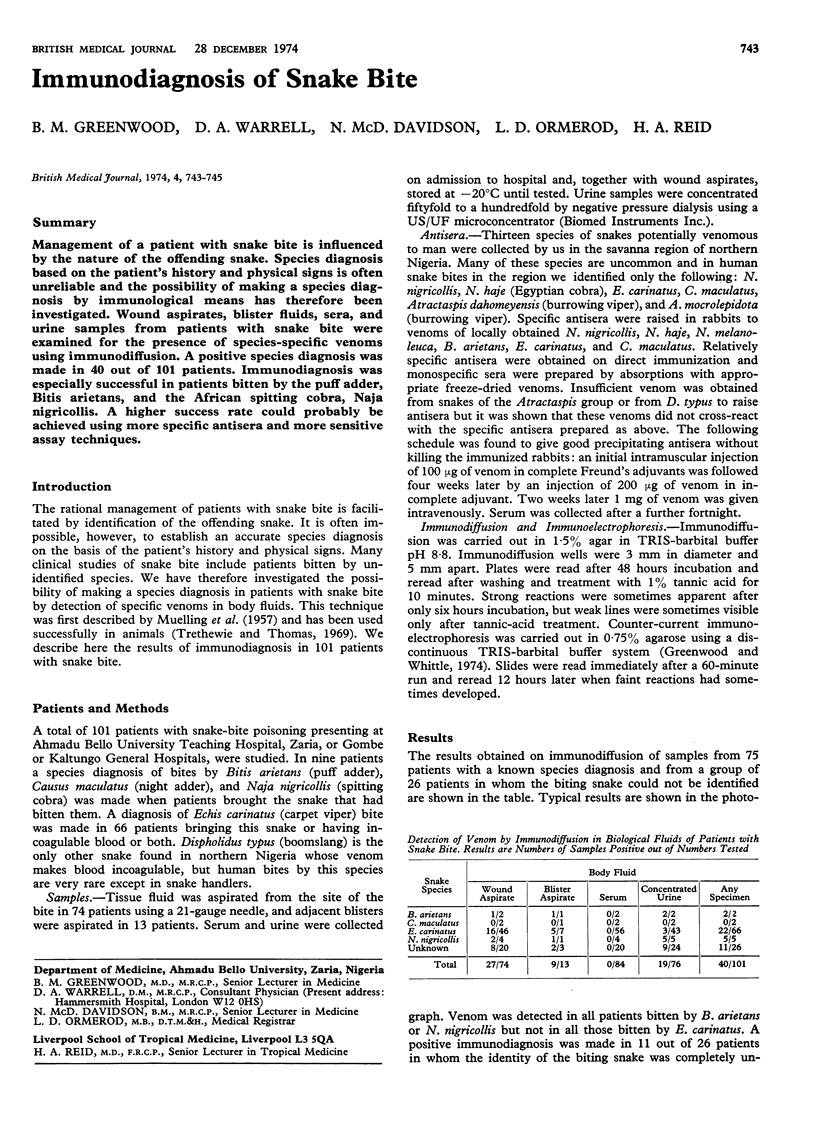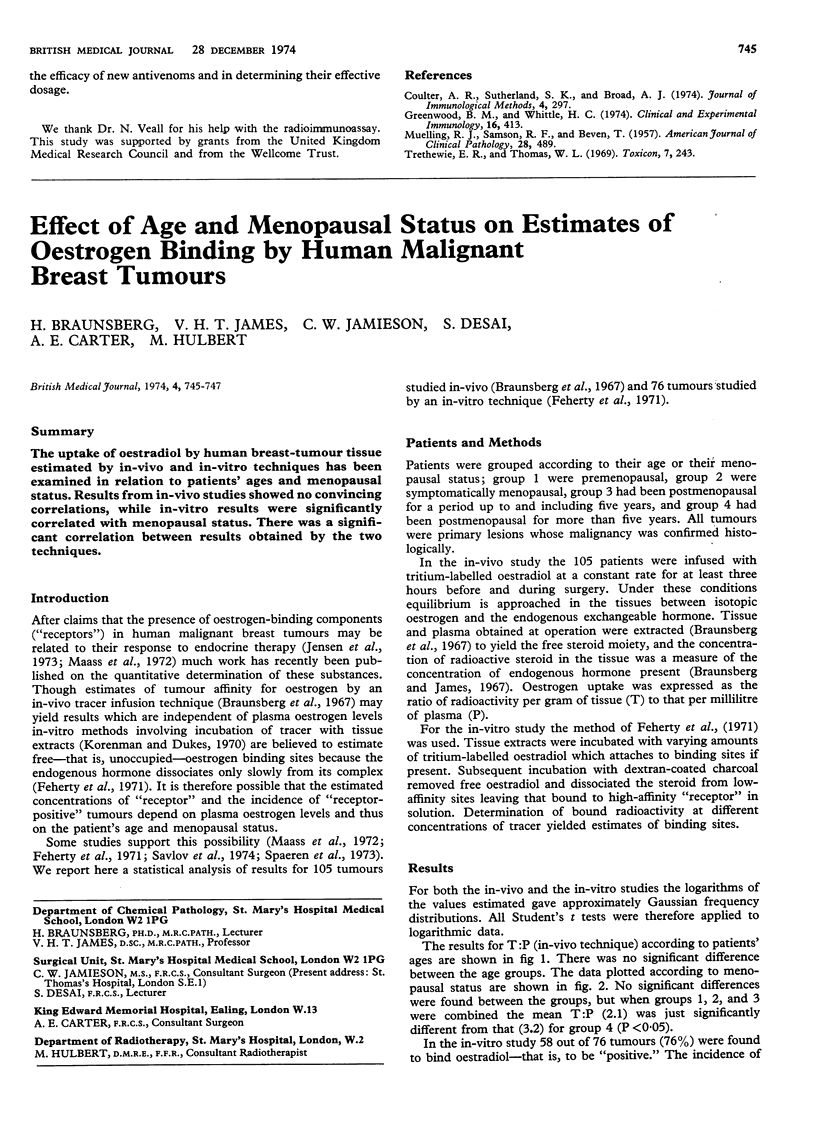Abstract
Management of a patient with snake bite is influenced by the nature of the offending snake. Species diagnosis based on the patient's history and physical signs is often unreliable and the possibility of making a species diagnosis by immunological means has therefore been investigated. Wound aspirates, blister fluids, sera, and urine samples from patients with snake bite were examined for the presence of species-specific venoms using immunodiffusion. A positive species diagnosis was made in 40 out of 101 patients. Immunodiagnosis was especially successful in patients bitten by the puff adder, Bitis arietans, and the African spitting cobra, Naja nigricollis. A higher success rate could probably be achieved using more specific antisera and more sensitive assay techniques.
Full text
PDF


Images in this article
Selected References
These references are in PubMed. This may not be the complete list of references from this article.
- Coulter A. R., Sutherland S. K., Broad A. J. Assay of snake venoms in tissue fluids. J Immunol Methods. 1974 Mar;4(2):297–300. doi: 10.1016/0022-1759(74)90072-6. [DOI] [PubMed] [Google Scholar]
- Greenwood B. M., Whittle H. C. Nature of the antigen present in the cerebrospinal fluid and serum of patients with group A meningococcal meningitis. Clin Exp Immunol. 1974 Mar;16(3):413–417. [PMC free article] [PubMed] [Google Scholar]
- MUELLING R. J., Jr, SAMSON R. F., BEVEN T. The precipitin test in elucidating the cause of death. Am J Clin Pathol. 1957 Nov;28(5):489–494. doi: 10.1093/ajcp/28.5.489. [DOI] [PubMed] [Google Scholar]
- Trethewie E. R., Thomas W. L. Some effects of material obtained from snake bite area. Toxicon. 1969 Nov;7(3):243–244. doi: 10.1016/0041-0101(69)90013-0. [DOI] [PubMed] [Google Scholar]



